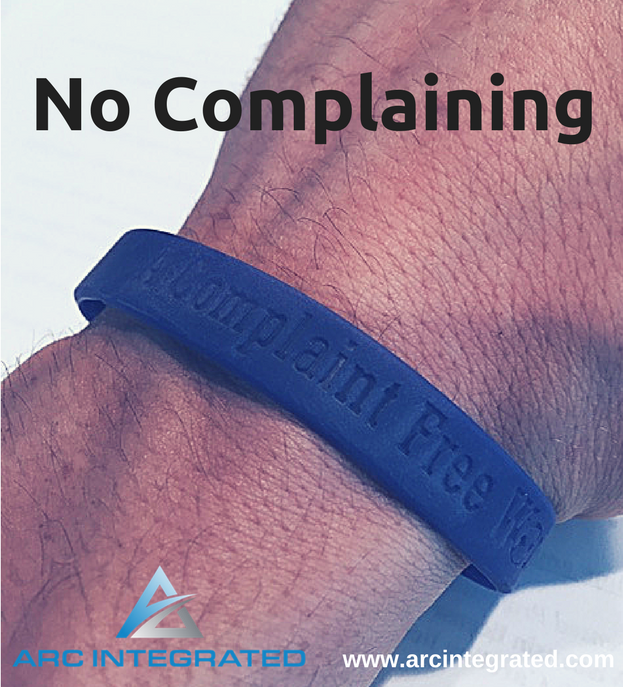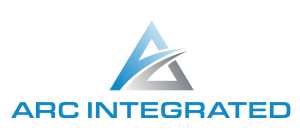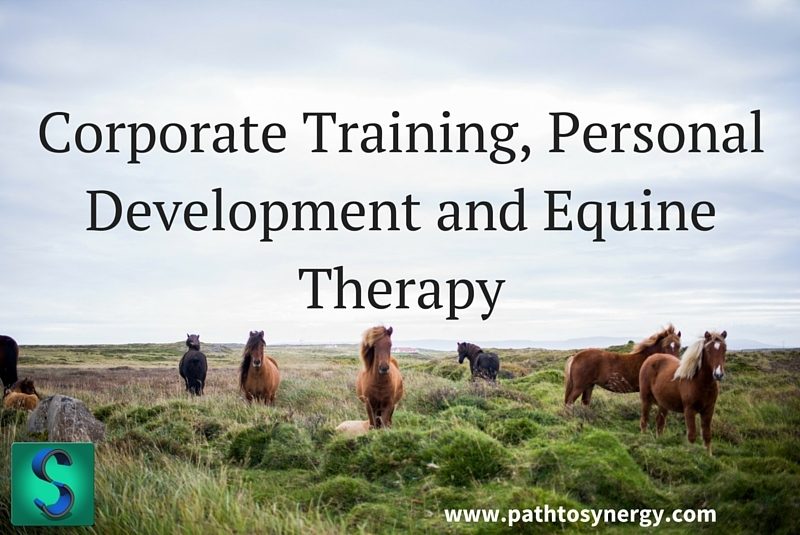The Best Listener at Work

You may wonder why being a good listener at work is really valuable. However, if you experiment with improving your workplace listening skills, you will see changes. In the fast past, high demand jobs so many of us have, really good listening may be something of a novelty. This may because of the ever-impending deadlines, the many distractions we have or the workplace stress. If you commit to being the best listener at work, you may notice that some of these challenges shift.
So how might listening skills impact your work place experience? Well, consider your experience now. How well do you feel heard at work? What do you notice about people how are really present with you when communicating vs. those that are anxious to move to the next “to do”? I would imagine that when someone is really present with you that it is easier to talk to them, you may feel more connected or more at ease. What if you were that person for everyone else? How might this impact your workplace experience if people knew that when they spoke to you, that they could count on you to really pay attention?
Particularly if you are a leader, really good listening skills go a long way. Being able to connect, understand and communicate effectively with your employees is a crucial component of an effective leader. According to a study in The Journal of Occupational Health, it was found that… “psychological stress reactions were lower in subordinates who worked under supervisors with high listening skill, while no statistically difference was observed among older subordinates.”
So if we know that our listening skills have an impact on our overall work stress, it seems like a great advantage for us to actively improve these skills. Below you’ll find three tips to improve your listening skills
1.) Offer more clarity
Repeating something back to someone in the way that you heard it will help to reduce miscommunication. Repeating a statement also offers the opportunity for this person to add additional clarification if necessary. This way of “active listening” ensures that this person is being understood correctly and shows them that you are paying attention.
2.) Focus
Sometimes we can get caught up in how we are going to respond to something. Thinking of what to say next reduces our ability to listen to what someone is saying. Attending to what someone is saying without focusing on how to respond will create stronger communication. Remain focused on the present moment and really digesting what it is that someone is communicating.
3.) Breath
Often times at the workplace we are moving a million miles a minute, which reduces our ability to take in information in any given moment. Taking a few moments to breath as you speak with someone will help you to be more present and process what they are saying more effectively. Before you speak or when you are feeling overwhelmed, stop and take a deep breath. This may sound trivial but can do wonders for not only stress but your ability to communicate and listen effectively.
After you’ve had the opportunity to put these behaviors to the test, I would invite you to make a comment below. I would suggest that in order to notice results you may have to practice one or all three for at least four times a week for three weeks. After you’ve practiced, consider answering the following questions –
How did they work if they did at all?
What did you learn?
How long did you practice each new behavior?
Best,
Michael
P.S. If you want to learn more about how to improve your listening skills at work, in order increase influence, engagement and build effective relationships, we can help. Schedule a free consult today to see if are a fit to work together
The Value of Showing Up
/by MichaelCorporate Training, Personal Development and Equine Therapy
Based on the title you may be thinking that these things are totally un-related, but you’re here, so thank you! I lead a group therapy session a couple of times a week with about 10 attendees and the topic of animals and our connection to them recently came up. We discussed different kinds of therapy approaches, like dog therapy, or equine therapy for example. The same day I had a friend bring this topic up, which I figure is enough for me to write down some thoughts, since this is something I have experience with. The interesting part is corporate training, personal development and equine therapy, are in fact, connected.
A few years ago I went through the process of getting certified through the Equine Assisted Growth and Learning Association (EAGALA). This association is the international leader in equine training specifically for mental health and personal development purposes. What this means is that they certify psychotherapists and horse professionals, to work together to facilitate different kinds of experiential learning. These experiences can be for the purposes of individual development, individual therapy, group therapy, couples therapy or corporate/group training.
So the question may be, what one thing has to do with the other? For someone that has never seen this process unfold, it may not seem like a relevant fit. The way horses and horse professionals can help to work through challenges with individuals or a group, is essentially through observation. For example, a typical Equine Assisted Psychotherapy (EAP) or Equine Assisted Learning (EAL) session, consists of the facilitators (therapist and horse professional) giving the individual or group a task to accomplish with the horse. This task could be to help move the horse through a gate, move the horse around an object or help a horse move in a direction without touching it. There are many activities/tasks that can be implemented but they are all ground activities, not requiring the participant to ride the horse.
During and after these activities both the therapist and horse professional make observations of how the person or people are engaging with the horse and each other. What shows up here is powerful. Just like in experiential education, when giving a group a task to accomplish together there are markers that form organically – personality styles, communication style, natural leaders/followers, conflict and/or resolution of conflict etc. What is most interesting about the EAP/EAL process is that the horse acts as a mirror for behavior and engagement.
During my time training as an EAGALA practitioner I was astounded by how fast things came to the surface through this process. For instance, when watching a family interact with an animal and attempt a task, it became immediately obvious what kinds of challenges the family had in their communication with each other. In this example it was easy to see which member wanted to control and override the input from other members of the family. This created conflict of course and made it more challenging for the family to accomplish the assigned task. Part of the feedback came from the horse as it experienced the intensity from one individual. Part of the feedback came from other members as they became frustrated with the challenge of the task, which the horse also reflected. It was powerful to watch.
So how did their communication styles come up you ask? This is the value of working through an EAP/EAL program. The response you get from a horse is authentic, immediate and not bound by the same kind of bias that people have. In addition, the horse professional helps to make observation of behavior of the horse while the therapist observes how the person is engaging.
Horses are able to pick up on the subtleties of behavior and intention because they are sensitive prey animals. So this means that if there is fear, anger, ease, curiosity or frustration – the horse will give feedback to these emotions/behaviors. Because the horse is so sensitive it gives immediate clues and reactions to the behaviors and intentions of individuals and groups. Some of these behaviors would be easily recognized while others are more subtle, which is why it is helpful to have a horse professional present. In the therapeutic context, understanding and processing behaviors and emotions can impact personal development and resolution of some of the challenges.
At this point you may be asking if this type of intervention has any credibility from research. The answer is yes, it absolutely does. For example, one study found that well-being and reduction in psychological distress immediately improved after EAP and held stable after six months. For a more detailed look at research as it compares to traditional therapy approaches, consider this article that acts an overview and comparison.
So how does this therapeutic approach have anything to do with corporate training or leadership? This is where EAL enters the picture. EAL differs from EAP in that EAL focuses more on education and learning rather than a therapeutic approach of resolving mental health issues or challenges.
In an EAL setting valuable skills can be obtained that would certainly impact the effectiveness of an organization. For example, often times EAL is done with teams on an organization in order to improve communication skills, leadership or team building. This process is still facilitated by a mental health professional and horse professional, but the intention is different.
In an EAL session with a team of professionals for instance, a simple task will be given to the team to accomplish with the horse. This task results in emerging behaviors and communication styles that will then be valuable for the team to later process. For instance, within a given task there may be leaders that emerge, communication that happens (or doesn’t), response style of collaboration or anger. In addition, there may be partnerships that naturally form on the team that previously did not exist or resentments that manifest that perhaps hadn’t previously.
The same question may emerge regarding efficacy of this particular kind of experiential education. One of the more interesting pieces of research on EAL has to do with Emotional Intelligence, a current point of focus in many leadership and team building approaches. This research is a great review of the field of EAL as well as Emotional Intelligence. The research found positive results for EAL as an intervention for improving Emotional Intelligence.
So, as we’ve seen, horses, therapy and leadership are in fact related! For more information about EAL and EAP, I recommend visiting the EAGALA website – http://www.eagala.org/. For more information on Emotional Intelligence as it relates to leadership, consider this article by Daniel Goleman. If you are interested learning more about this topic or discussing a potential workshop to build team or leadership skills, please contact us!
Keep Learning,
Michael
P.S. If you are curious to learn more about personal development, workplace challenges, interpersonal dynamics, goal achievement and a wide variety of other topics, sign up today! www.www.arcintegrated.com/newsletter. It’s totally free.
You’ll also receive a FREE tip sheet with Five Strategies to Build Motivation!
Beat the Post Vacation Slump!

It’s that time of year. You may have recently returned from a trip, visiting relatives, vacationing with friends, or maybe just enjoying a few days off. However your holidays were spent, I hope they were rejuvenating and enjoyable. Getting back to the grind can be a challenge. I’ve certainly experienced it and I know many friends, family, and clients have too. Today I want to talk about how to beat the post-vacation slump!
Whether the holidays were filled with fun, laughter, and excitement or anxiety, busyness, and overwhelm, coming back to a routine may be tough. Below you’ll find some strategies about how to get back to being at the top of your game in work and in life, in addition to some tips for the next time you go on vacation.
Be Clear
Personal Life – This is the time for New Year’s Resolutions, woohoo! The truth is that the majority of them don’t stick. According to some data, only 8% of people accomplish their New Year’s Resolutions. However, there are many strategies on how to improve the likelihood of change that lasts. I would argue that part of the reason people don’t accomplish their resolution is that there is not enough clarity around the goal. In order to get back in work mode and also work towards new goals you have, consider outlining the details in order to build clarity. This could mean creating a yearlong vision and then working it backward to a six-month goal, a three-month goal, and eventually an action step you can take today!
Work-Life – Meetings often are less productive after many people have been out of their routine or away from work. You may see less productivity in the meetings outside of work too. To remedy this, set clear expectations for what the meeting will review and accomplish and do not veer away from this objective. Make sure there are clear action steps for all members of the meetings you attend.
Stay Focused
Personal Life – In order to stay focused on our personal goals and re-engaging in our routines post-break, there needs to be some way to stay motivated. Build focus through keeping reminders that are visible and related to your goal. Alternatively, creating a writing practice that explores the reason for working towards this goal can help to stay motivated and focused. Also, creating accountability in some way may be helpful in building focus. Accountability could be created through working through a goal with someone else or hiring a coach to help explore what is holding you back.
Work-Life – Lack of focus at work often shows up in the context of getting tasks accomplished or having a productive meeting. Often times meetings set out with many things to accomplish and by the end have not completed their intended outcome. Stay focused on what is most important and do not add too much to the meeting, always expect that things may take longer than anticipated. Have no more than three main objectives per day that are on your “must complete” list.
Action Items, Expectations, and Deadlines
Personal Life – Reaching goals is all about combing process and product. It’s great to read self-help books, follow thought leaders, or engage in the philosophical debate about mindset, intention, and positivity. The next step is combing all of this wonderful theory with small steps in the right direction. Keep in mind that these steps can be small, but should be consistent. Keeping after deadlines and continuing with actions items after exploring ideas will lead to progress.
Work-Life – The same issues exist in the work world when we have meetings or discussions around an idea. Ideas often need to be translated. People feel that meetings are a waste of time when there is no clear outcome, objective, or “to do” item. Always be clear about expectations for all attendees. Have attendees commit to their particular action item as well as deadline so everyone is clear on each person’s objective.
Keep your Routine in Check
Personal Life – Having some kind of routine in your personal life will do wonders for your mood, clarity, energy, and productivity. The holidays are an easy time to get thrown out of a routine, whether is exercise, eating healthy or a daily practice, it’s a challenging time of year to keep up with our best intentions. Here is a great resource from The Model Health Show about holding onto a good routine, even during the busiest time of year
Work-Life – Getting back into a routine is easier to do with work when it isn’t totally avoided during a break. This certainly doesn’t mean you have to be checking email every day or doing work on vacation….that is definitely not recommended. But keeping sleeping to a minimum may be helpful when it’s time to get back to work. Also, reading while on vacation may help to keep your mind active and productive so that it may be easier to re-engage when it’s time.
Push Yourself!
Personal Life – I hold the firm belief that we are much more capable than we often give ourselves credit for, in every sense. Care to experiment with this idea? Try pushing yourself past the invisible finish line that you’ve set for yourself. Go to the extra class, read the extra chapter, do another set, run the extra mile, take the risk in a relationship. Make a consistent effort to go past your comfort zone, you’ll be surprised what you learn.
Work-Life – The same concept of going past where we think we are capable of applies to work. Consider how much you get done in the typical day and see if you can double it. No, I don’t recommend working 16 hours instead of eight. Working more efficiently and pushing past some of the self-set boundaries is a better (and healthier) experiment to try. Consider how much time you spend during the average day being distracted by non-work-related issues or work that doesn’t necessarily make you more productive but makes you busier. Evaluate how to be the most productive version of yourself and push out any limiting beliefs that may have held you back previously regarding how much you could accomplish in a day.
Re-Evaluate
Personal Life – This time of year is a great time for downsizing, clearing out, resetting, cleansing, and letting go. What has been serving you this last year and what no longer helps you to become the best version of yourself? You can pose this question to any facet of your personal life from your relationships to your diet to how you spend your time. Evaluating the different aspects of your personal life allows you to set clearer goals and intentions for the year ahead and also helps to come back stronger from time off.
Work-Life – Is the job you’re in the one you want to be in? Taking the time to evaluate how much you are really committed to the work you are doing can be a helpful way to not only improve your re-engagement post-vacation but also help you make changes to your current situation. If you are certain the work you’re in is for you, great! Take the opportunity to evaluate how you will make this coming year a better one than the previous. If you determine that your purpose is elsewhere, come up with an exit strategy. Outline your strengths, objectives, and timelines. This will help make the rest of your time in your current position not seem as daunting.
*Challenge of the week*
Pick one of the strategies above and take action! Just one. After you’ve experimented for one week, come back and leave a comment below and share what you learned. Let’s help each other make significant changes this year!
All the best,
Michael
P.S. If you are curious to learn more about personal development, workplace challenges, interpersonal dynamics, goal achievement, and a wide variety of other topics, sign up today! www.www.arcintegrated.com/newsletter. It’s totally free.
You’ll also receive a FREE tip sheet with Five Strategies to Build Motivation!
No Complaining

No Complaining – Arc Integrated
I’m glad you’re here. In the spirit of the time of year, I want to offer a gift, mixed with a challenge. This idea is founded by Will Bowen of www.acomplaintfreeworld.org, details below. The reason for this gift is that there continues to be more and more evidence to connect our thoughts, statements, actions and feelings to our overall experience of the world. This challenge offers the opportunity to consider our statements, if only for three weeks. Basically, no complaining. One strategy in tackling this seemingly insurmountable task, is practicing gratitude. We all have much be thankful for. Ok, I’ll start. In this card you’ll find a few reasons why I am grateful to have you in my life. I hope you find this gift intriguing and interesting enough to experiment with.
Love,
Michael
The paragraph above was the beginning of a card I wrote for about 20 members of my family as well as some other loved ones over a holiday season. I wanted to take the opportunity to give back some gratitude and a chance to put some intention into action for the New Year. I learned about this through A Complaint Free World, here is a video that is worth a watch about this project.
The basic idea is that you get a bracelet that stays on your wrist until you can sustain 21 days without complaining. Every complaint means you switch wrists and the timer starts over. According the website, they say that this experiment typically takes 4-10 months to complete! What a great opportunity to challenge ourselves!
We often hear about studies on changing our mindset, practicing mindfulness, being positive or other non-tangible pieces of advice. While I am totally on board with the previous suggestions, I like this 21 day challenge because it has an activity attached to it, which I think helps to build the likelihood for success. Whenever we are practicing a new way of thinking or feeling, there should be an associated new way of being or doing.
I was really thankful for my family’s response to this gift as it seemed very heartfelt and appreciative. There were some tears shed, lots of joking and I think some added thoughtfulness about our individual attitudes and statements, which was my hope.
However, I don’t think that just passing out bracelets and offering the challenge would have been as meaningful without the added gratitude. With every bracelet I gave I wrote a personalized note regarding why I was thankful to have each person in my life. I believe that expressing gratitude as a part of this gesture was important because it was an example of how to pursue the task of – no complaining.
If you are reading this blog, then you most likely have everything you need. You have shelter, food/water and probably some people in your life that you care about or care about you. There is much to be grateful for. Expressing gratitude is one strategy in combating the pattern of complaining.
Care to experiment? The next time you notice yourself complaining, see how this could be shifted into a statement of gratitude. Alternatively, practice expressing gratitude more often and see if that shifts how much you are complaining.
Wishing you a prosperous, fun, challenging and growth filled year ahead!
Best,
Michael
P.S. If you are curious to learn more about personal development, effective workplace culture, dynamic leadership and a wide variety of other topics, sign up today! www.arcintegrated.com/book. It’s totally free.
You’ll also receive Chapter One (for FREE) from the upcoming book – CHANGES. This book explores seven themes of sustainable change so that you can finally achieve the professional and personal goals you have been striving for but keep missing.

